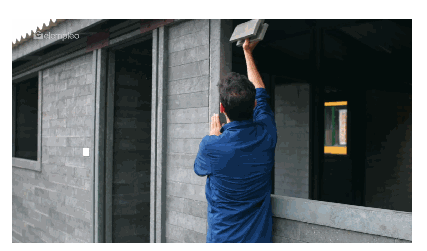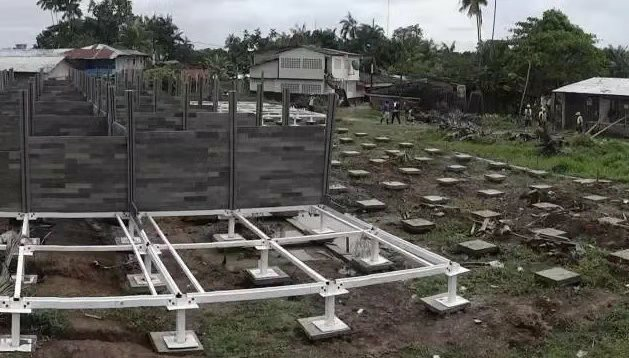Environmentally Friendly Houses! Use Waste Plastics as Building Materials
Can we wait for it? When can we use recycled waste plastic to build more green and beautiful houses? Let piles of marine garbage, like magic, go through screening, cleaning, crushing, mixing, and then the melted materials are poured into the mold, so that waste plastic bricks appear, and they are made into pieces for building houses. That is called "Special materials", how good it is to use these materials to serve mankind! As the so-called small bricks have great wisdom.

Let's calculate the economic account: a 40-square-meter house uses 8 tons of waste plastics more than enough, and it only takes 4 people to assemble it in 5 days, and even a non-professional mason can handle it. This kind of building material is cheap and good quality, but it can be seen everywhere. You can supply as much as you want. I can guarantee that a plastic house will be stronger than a brick and concrete house, right? And it is estimated that it has the advantages of not collapsing, leaking rain and preventing moisture, right?
Looking back five years ago, this case already appeared. Its practical use of recycling old plastic materials to build environmentally friendly houses was originally a good way to think of a group of innovative workers in Colombia. This innovation can simultaneously solve the problems of plastic pollution and the general lack of housing supply in Latin American countries.
I remember that there is a "455 village" in Valencia, Venezuela, and the buildings here are made of plastic. Recycling old plastic materials to build environmentally friendly houses is a good way to think of a group of innovative workers in Colombia. The inventor said that this innovation can simultaneously solve the problems of plastic pollution and the general lack of housing supply in Latin American countries, and it also has international significance. This innovative invention comes from a company called "Concept Plastics" in Bogota. Not only has it won the local innovative enterprise award, it has also become a "two-material" solution to the pollution of plastic products that endanger the earth and the housing shortage of the local poor. This innovative concept was first inspired by Colombian singer Fernando Llanos, who used recycled plastic materials to build a house for himself. Then architecture student Oscar Mendes turned this inspiration into professional research in his graduation thesis. Many years later, Mendes put this idea into practice and created the "Concept Plastics" company, which used recycled plastic to build houses, and Llanos became one of the partners of this company.
"Concept Plastic" recycles waste plastics and rubbers, melts them and injects them into molds and adds additives to make them into fire-resistant lightweight construction materials. These materials are not traditional bricks, but like children's Lego bricks, there are fixed grooves and jacks. The construction process does not require any adhesives. Ordinary people can build their own houses with simple training. This kind of house also has the advantages of being movable and capable of being disassembled, transported and reconstructed at any time. Mendes believes that this idea can not only solve the housing problem for a large number of poor people, but its environmental protection concept has international significance. The social significance of this project is far-reaching, because the housing crisis in Latin America is extremely serious. Mendes said in an interview, “40% of the population in Africa, Asia and Latin America do not have their own houses, and one in seven of the world’s population is extremely poor. We hope to provide housing for such people.”
In addition, this project also has environmental and economic benefits. About 12% of the waste generated in Bogotá’s city comes from plastic products, and our current utilization rate of this part of waste is only about 13%,” Mendes said. “We have also created value for industrial plastic waste that has no recycling value. " Mendes has so far provided 100 sets of environmentally friendly houses made of recycled plastic materials to the waste disposal agency of the city of Bogotá. Although these houses are only 40 square meters in size, they are "complete with all internal organs". Each has two rooms, including toilets, living rooms, dining rooms and kitchens. It only takes 5 days for 4 ordinary people without any professional skills to build such a house. The "Concept Plastics" company has a plastic waste processing plant in Bogotá, which processes recycled plastic into "bricks and tiles" for building houses. "We work with plastic waste recycling personnel, and some private companies send us industrial plastic waste," Mendes said. The company can receive 100 to 120 tons of such plastic waste every month.
Mendes’ company has built such environmentally friendly houses in many places in Colombia, the most representative of which is in Guabi City, Cauca Province, on the Pacific coast. They built 42 houses for the homeless, covering a total area of 1,000 square meters and costing about 130 US dollars per square meter. It took only 15 people and 28 days to build these houses.
"Concept Plastic" believes that the greatest significance of making this kind of house is environmental protection and solving the housing problem of the poor. We hope to inspire companies that produce plastic and encourage them to convert plastic products into housing. We also want to call on everyone to develop the habit of separating plastic and other garbage, so that all of us can contribute to providing housing for the poor, Mendes said.
Finally, by the way, revisit the subsequent construction methods of building the house as follows: Please lay the foundation with bricks and steel first, and then build up the bricks one by one and knock them firmly. Fix the corners with screws and cover them with waterproof asbestos tile sheds. An environmentally friendly, durable and safe house is built!

Assuming that industry professionals around the world can devote themselves to solving the various adverse effects of plastic waste on the environment in this way, at the same time, it also allows the poor and homeless people who live in the tents on the hills and even under the bridges to have a new home. Does that mean doing good deeds in the world? This will not only solve environmental problems, but also help people solve more existing hard life problems. It will kill two birds with one stone. Why not do it?

